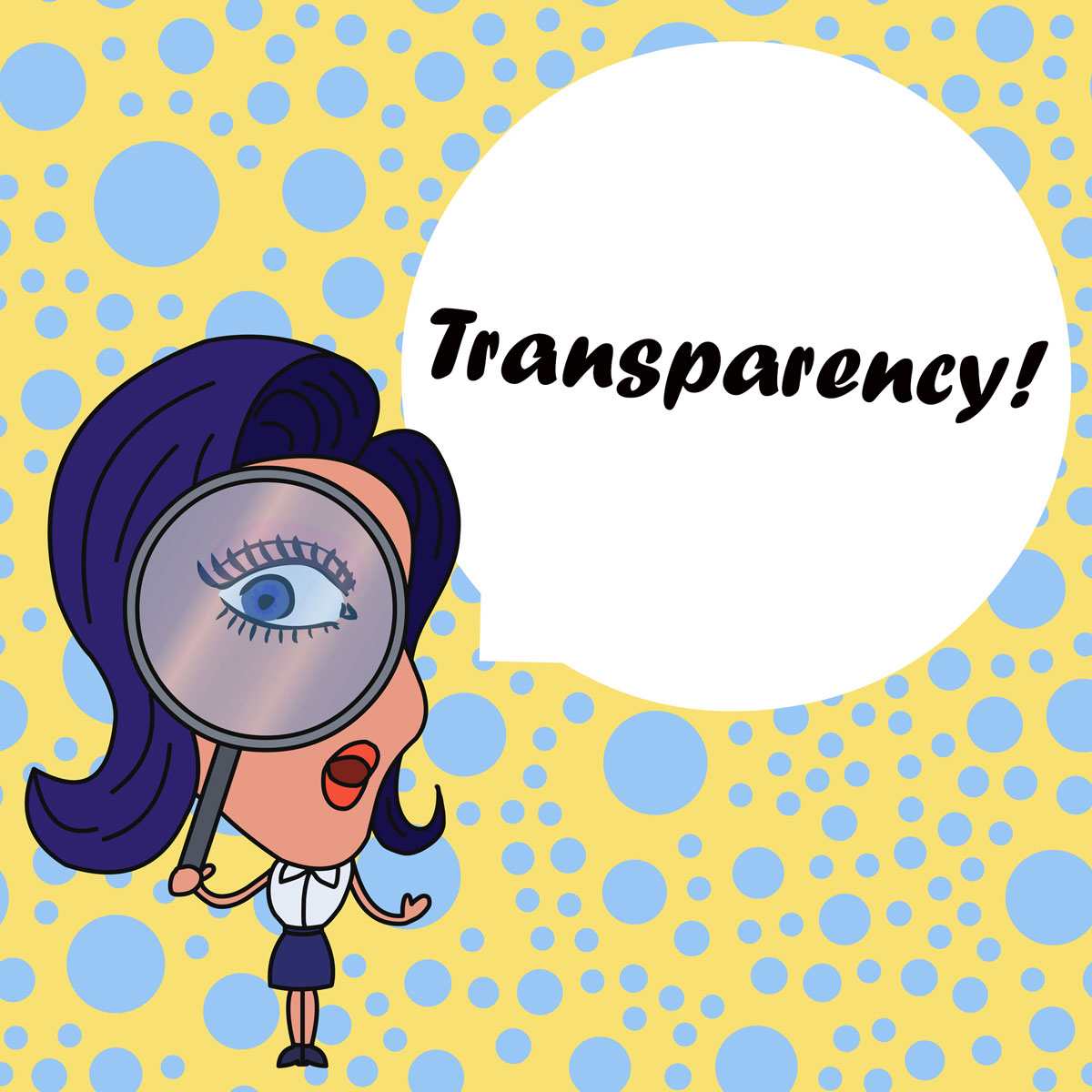A significantly increasing number of companies strive for agility. They intend to progress with agile transformation.
Based on my research from several dozen organizations, what might prevent them from benefiting from the Scrum (or just an agile mindset) is lack of transparency. In these circumstances, any change seems to be impossible to proceed with.

The Scrum framework is based on three pillars: transparency, inspection, and adaptation. We call it the empirical process. Trust and courage are required to enable transparency. In order to implement inspection and adaptation – transparency is crucial.
In the environment of distrust, applying the Scrum framework might be more complicated than in a healthy organization.
People are frustrated with such a situation. Many of them want to make changes to increase transparency. They often ask me how to overcome it.
The majority of people reported that in their companies, the level of Transparency is shallow. What does it mean?
Some symptoms that you can easily verify in your organization:
- People are afraid of sharing the current state of their work (in Scrum Teams, it may concern the Increment).
- People are punished after showing the current state of their work or revealing some information.
- Information is kept hidden internally.
- Stakeholders, especially customers, are given only positive information about the product. The real state of the product is hidden.
- Top management and middle management decisions are kept in secret, information is managed to whom, when, and to what to uncover.
- Departments compete with each other instead of cooperating. Relevant information is not spread.
- Politics are present.
What is the result of such a situation?
- People do not share their opinions; lack of trust may result in a lack of employees’ engagement.
- No environment for making changes (any).
- Lack of inspection and adaptation.
- Stakeholders/Customers may lose trust, and dealings might be rigid
- The current state of the Increment or the whole product might be illusive. People may make wrong assumptions about the state of the Increments and the entire product.
- Low level of integrity in the company
- Lack of focus on value and people (including customers); You may observe a focus on delivery.
- Politics in the organization cause employee frustration and sometimes even fear, manipulative behaviors, the traditional model of the organization, hierarchy.
- Technical debt might increase due to the lack of transparency and fear amongst employees or lack of acceptance of technical improvements.
- No allowance for designing experiments, failing, and learning
- Disagreement or conflicts between departments
- Low level of direct communication with stakeholders/customers
Interestingly, some people strive for transparency in these environments. Still, they have enough engagement and energy to smooth the path for agility.
I observe how much those efforts are stressful. Some people reported fear of being fired or moved to another team.
What can you do if you recognize yourself working in this condition, yet still want to change it?
Regardless of your role in the organization, you can always do something towards Transparency.
Based on the Scrum framework and my experience gained over the years, I would advise:
Start with transparency and build trust. Explain to everyone (especially top and middle management) why it is beneficial to have a transparent trusting environment. Share positive examples from other companies. If possible, show numbers.
Invite stakeholders/customers and people from other departments, and introduce a new way of working, present benefits, teach them, and coach them. Work together through your Product business strategy, listen to them, again - build trust.
Apply empiricism. The whole Scrum framework is all about Transparency, Inspection, and Adaptation.
Measure value. This is one of the best approaches on how to introduce Transparency to the organization. Once you have data, evidence, you may start the conversation based on the current state and facts. Use the Evidence-Based Management framework. Read more here
https://magdalenafirlit.com/introduction-to-evidence-based-management/
https://magdalenafirlit.com/evidence-based-management-what-is-this-part-1/
https://magdalenafirlit.com/how-to-start-with-evidence-based-management-part-2/
https://www.scrum.org/resources/evidence-based-management-guide
Find other people who share the same beliefs and mindset. Cooperate. You can make a difference in the organization and improve Transparency.
Shift from the project mindset into the product mindset. I found it beneficial to start conversations about what the product is in companies. Why is it important? What does it have in common with transparency?
Thinking in terms of a product is a holistic view, seeing a bigger picture. A project mindset might lose this big picture and narrow down your perception into a scope and deadline. Product thinking includes your customers (users), their outcomes (thus value you delivered), costs, company impact, designing experiments, and many more. This approach requires transparency to be useful and valuable. Transparency for the stakeholders with different expectations; for the organization to share and collect value measures; for the customers to cooperate with them smoothly and build trust; for teams to share the product strategy, vision, have shared understanding and engagement.
The whole process of the applying transparency might be a huge saltus and mindset shift in your organization. Be patient. inspect & adapt.
The first version of this article was published on my website: https://magdalenafirlit.com/fight-for-transparency/
